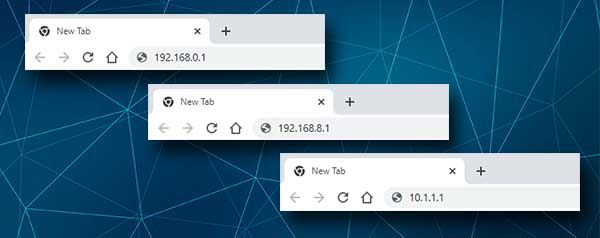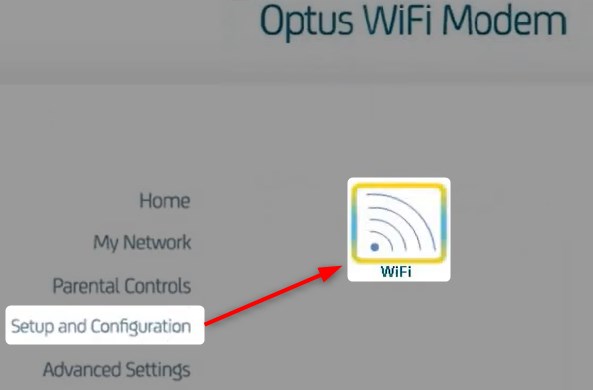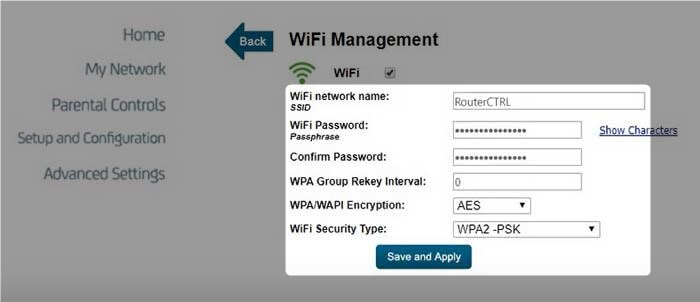Managing and securing your Optus wireless network is something we have to know how to do, no matter whether we are already familiar with home networking or not. Of course, it is always better to leave those things to professionals, but knowing the Optus router login steps and securing the network at a basic level is definitely something even beginners can do.
In this article, we are going to guide you through the Optus router login steps and also show you how to set up or change your WiFi password and network name in the router settings.
So, let’s begin!
CONTENTS
You Are Going To Need:
- A device to connect to your network, either using a wired connection or WiFi.
- Wireless or wired access to the network
- The Optus default IP, and the admin username and password.
What Are The Default Optus Admin Login Details?
If you want to access the router admin dashboard, you need to know the admin login details. In most cases you can use the default admin login IP, username and password. However, if you or your ISP has changed the default ones, please use the custom admin logins.
The default Optus router login details are as follows:
Default IP address depends on the router model and can be 192.168.0.1, 192.168.8.1 or 10.1.1.1

The default username and password can be found printed on a label that can be found on the bottom side of the router. You can also try these default admin login details:
Default admin username: admin
Default admin password: password
As you can see, these default login settings are pretty simple. This is why it is recommended to change the admin password ASAP.
Let’s Access The Optus Router Admin Dashboard
In the next few steps we are going to show you how to login to your Optus wireless router. At the same time we will explain each step and why you have to do things in a certain way.
STEP 1 – Connect To The Network
We have already said that you will need a device to connect to the network. You can use a computer, a tablet or a smartphone, but it has to be connected to your network. If your device isn’t part of the network, if it isn’t connected, you can’t login and access the admin dashboard. Depending on the device, connect either using the network cable or connect to the WiFi. Active internet connection is not required, but you have to be connected to the network.
STEP 2 – Launch A Web Browser
The devices we have mentioned already have a web browser installed. Launch the one you use every day but make sure it is up-to-date. The web browser helps us access the web-based interface of the router. The web-based interface or the Web GUI (Graphical User Interface). The Web GUI will allow you to modify all the settings and features of your router when you login as an administrator.
STEP 3 – Enter The Optus Router IP In The Address bar
After you launch the browser, enter the Optus default IP address in the Address bar of the browser. After you type the IP hit the enter key on your keyboard or tap on the return or Go button on your mobile device. If the IP is correct, the router login window should appear asking you to enter the admin login credentials. If the router login page doesn’t appear, something is wrong. In that case check whether you have entered the IP correctly. Or follow the steps from this guide to find the correct router IP address.
NOTE: If you have connected your device to the router using a network cable you should be taken to the router admin dashboard without the need to enter the username and password.
STEP 4 – Type In The Optus Admin Username And Password
When asked to enter the username and password, use the ones we have already provided:
Username: admin
Password: password
Click on the Login button when you enter the username and the password.
You can also check the label that can be found under the router. It contains the default admin login details as well as the default network name and password. Alternatively, you can use the user’s manual to find these.
STEP 5 – You Have Completed The Optus Router Login Steps Successfully
After you click on the Login button, you should see the Optus admin dashboard. In case this is the first time you are accessing these admin settings, you will be taken to the Quick Setup screen. In that case, just follow the instructions and you will have your wireless network ready and protected in a few minutes.
However, if this is not the first time your Optus router is being accessed, you will see the router settings page. Navigating through the menu is simple and straightforward and everything you need can be found almost immediately.
Now, since we all want to keep our personal files and information secured, it is important to make some additional changes in the settings to protect your network. The simplest ones are changing the admin password and changing the wireless password or setting up a new one if your WiFi has been unsecured. While you are managing the wireless settings, you can also change your wireless network name if you want.
In the next few paragraphs we will show you how to make these changes.
Change The Optus WiFi Password And Network Name?
When you access your Optus router settings, click on Setup and Configuration in the left-hand menu. After that click on the WiFi icon.

The WiFi management page will open showing the current wireless network names and passwords for both the 2.4 and the 5GHz networks.
If you want to configure these networks you need to click on the Configure button. The WiFi Management page will open and there you can make the necessary changes.

In the WiFi Network name SSID field you can set up a new wireless network name.
In the WiFi Password Passphrase field enter the new wireless password.
Type the WiFi password again in the Confirm Password field to make sure you didn’t make any typing errors.
As WPA/WAPI Encryption select AES.
As a WIFI Security Type select WPA2-PSK.
Click on the Save and Apply button to confirm and save the changes.
After you save the changes, click the back arrow at the top-left and make the necessary changes for the 5GHz network. Make sure to use a different network name now, you can simply add 5, 5G or 5GHz or anything you want. The idea is to know which wireless network you are connecting to.
After you save these changes, you will have to reconnect your other devices to the network.
Final Words
As you can see, accessing the Optus router settings, as well as changing the wireless password and network name is pretty simple. Of course, you have to have the correct login details and access to the network. However, if you have changed the admin login details before and you can’t login now, you can reset the router to factory settings. This will allow you to login using the default login credentials.
And if you aren’t feeling confident to make the necessary changes, it is recommended to get in touch with someone to help you out and make the changes for you. Besides the basic change of the wireless settings you can also enjoy the benefits of port forwarding, blocking unwanted devices from the network, creating a separate guest network for your friends and family and much more.

Hey, I’m David. I’ve been working as a wireless network engineer and a network administrator for 15 years. During my studies, I also worked as an ISP field technician – that’s when I met Jeremy.
I hold a bachelor’s degree in network engineering and a master’s degree in computer science and engineering. I’m also a Cisco-certified service provider.
In my professional career, I worked for router/modem manufacturers and internet providers. I like to think that I’m good at explaining network-related issues in simple terms. That’s exactly what I’m doing on this website – I’m making simple and easy-to-follow guides on how to install, set up, and troubleshoot your networking hardware. I also review new network equipment – modems, gateways, switches, routers, extenders, mesh systems, cables, etc.
My goal is to help regular users with their everyday network issues, educate them, and make them less scared of their equipment. In my articles, you can find tips on what to look for when buying new networking hardware, and how to adjust your network settings to get the most out of your wi-fi.
Since my work is closely related to computers, servers, and other network equipment, I like to spend most of my spare time outdoors. When I want to blow off some steam, I like to ride my bike. I also love hiking and swimming. When I need to calm down and clear my mind, my go-to activity is fishing.
